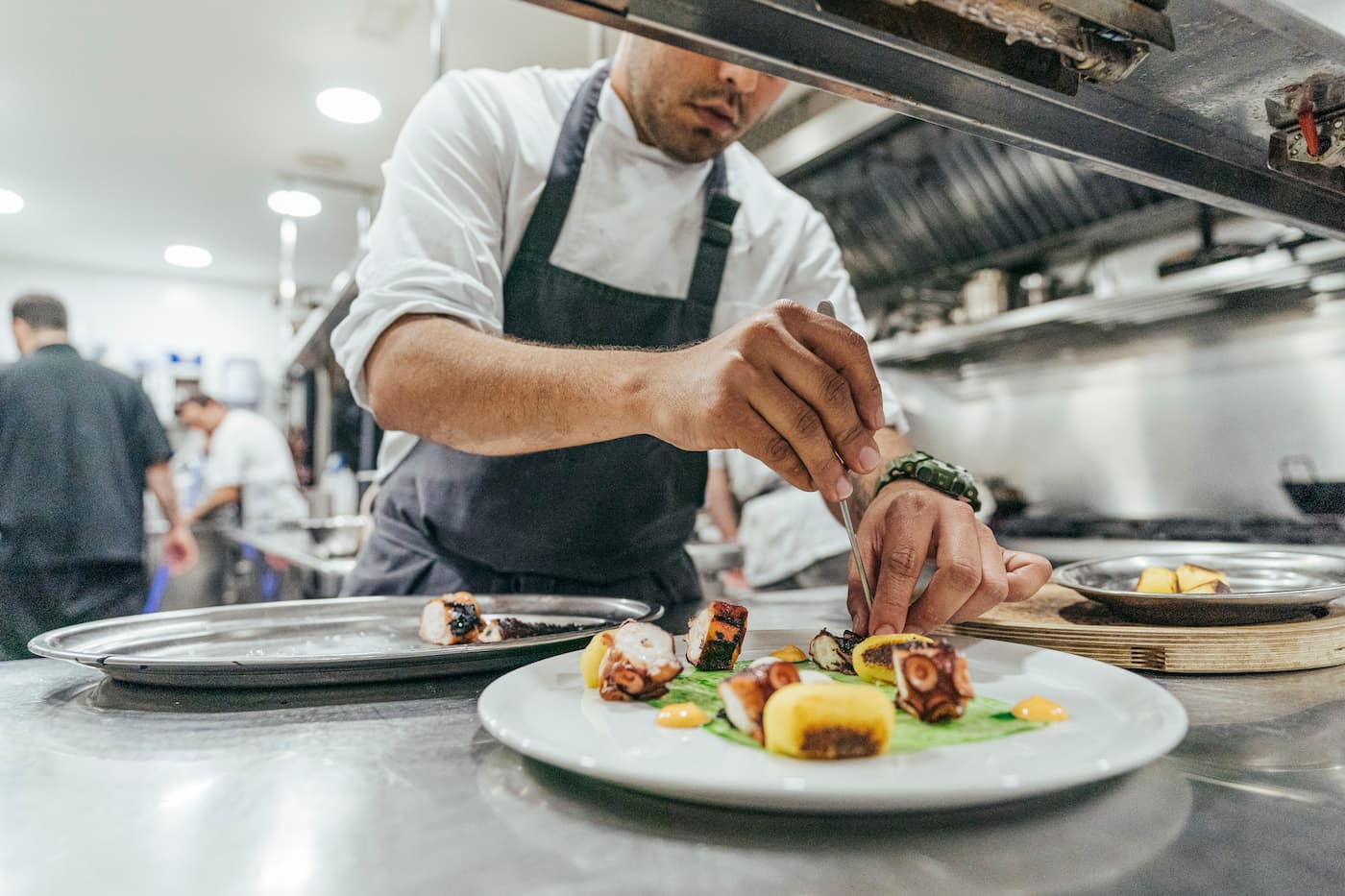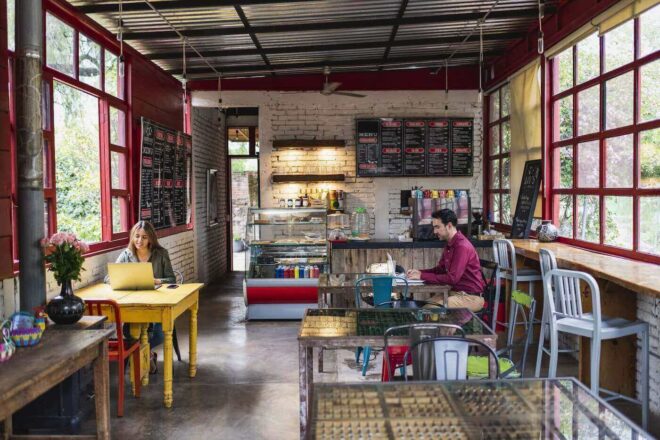How to get a Michelin Star: Criteria and best practices
Editorial Team
8 min read
For many restaurateurs, achieving a coveted Michelin Star can be the pinnacle of their career — or at least a major feather in their professional cap. But for chefs just starting out or owners with not as much industry experience, it may not be clear how to get a Michelin Star or even what the process is for vetting and rating a restaurant.
Here’s an inside look at the official Michelin Star criteria, the history of the organization behind the Stars, and some additional details on what Starred restaurants go through to get—and maintain—their ratings.
What is a Michelin Star?
A Michelin Star is an annual award given out to restaurants that meet the very high standards set by the awarding organization, the historic Michelin Guide. Many consumers may recognize the Michelin name thanks to the company’s influence in the automotive space. Brothers Andre and Edouard Michelin launched their now-legendary tire company in 1889, while based in the French town of Clermont-Ferrand.
At first, the Michelin Guide was a more informal pamphlet designed to inspire French motorists to explore their country, with restaurant write-ups helping travelers determine where to head next. A more formal version replaced the free Guides in 1920, and the Star system was first added in 1926.
Today, the Michelin Guide is a best-seller covering a staggering 30,000 establishments scattered over three continents and 30 territories. What once began as a marketing ploy has now sold over 30 million copies and serves as one of the most well-respected, formidable guides of its kind in the entire world.
Stars are awarded following a restaurant visit by a Michelin Guide Inspector. Stars are handed out annually, and they are not permanent. Restaurants can gain or lose their stars based on re-inspections.
Michelin Star rankings: How do they work?
But what about those Stars? Is a single Star the sign of a basic restaurant? Is the evaluation all about the food? The answer is “no” to both. Stars are simple little symbols, but the process behind those Stars is anything but simplistic.
Straight from the source, here are the Michelin Star rankings:
- One Star: High quality cooking, worth a stop
- Two Stars: Excellent cooking, worth a detour
- Three Stars: Exceptional cuisine, worth a special journey
So, the Stars themselves represent how worthwhile it is for hungry, discerning diners to visit a particular establishment. The presence of any Star indicates a top-notch spot, but as the number of Stars grows, diners can assume that their experience will be one to remember.
Michelin Star criteria
Foodies can use the primary Star rankings to help steer their dining itineraries, but chefs eager to earn their own accolades should understand all Michelin Star requirements. So, how does a restaurant get a Michelin Star?
Here’s what an esteemed Michelin Guide Inspector is looking for when they visit a restaurant.
Use of high-quality products and ingredients
At its core, a meal depends on two things: incredible ingredients and outstanding technique. Michelin Inspectors look for the use of locally grown, in-season ingredients that reflect both the restaurant’s mission and where it’s situated geographically.
Note that this criterion is not about utilizing only the highest priced or rarest of ingredients. While truffles and caviar can be attention getters, so can perfectly charred, spice-dusted local carrots and an artisanal bread made by a nearby baker. International Director of Michelin Guides, Michael Ellis, underscored this point at a recent panel discussion, saying, “Making the simple sublime will get our attention.”
Culinary technique mastery
To make those simple ingredients sublime, chefs must employ a wide range of techniques and prove they’ve mastered those techniques—and the proof really is in the pudding, as they say. Culinary pros often say that a talented cook knows how to highlight the innate characteristics of produce and protein while also adding a little something extra. Fancy methods such as sous vide cooking and molecular gastronomy are impressive, but do they do the ingredients justice or are they used for style rather than substance?
Other things that fall under the banner of technique mastery include:
- Cooking everything properly: Are proteins cooked to the preferred temperatures? Is pasta al dente rather than mushy or stiff?
- Balancing flavors and textures: An award-winning dish should hit all the essential flavor components: sweet, sour, spicy, salty, butter, and umami. In most cases, there should also be an array of textures, with soft, supple components getting much-needed contrast thanks to components that are crunchy and crispy.
- Creating dishes that look as good as they taste: Plating is important, and dishes that look stunning make a better impression.
- Pacing: This may seem like a service issue, but pacing also refers to whether a chef can execute ideas in a timely manner. Guests don’t want to wait an hour between courses because the back-of-house team is struggling to bring ideas to life.
Chef’s connection to cuisine
This is one of the most subjective criteria, because it involves the Inspector’s impression of how the food connects to the chef who created it. Ideally, dishes should be full of life. In the same way you wouldn’t want to have a conversation with someone who has nothing to say, it’s not fun to eat food that’s lackluster or “without soul.”
Part of assessing connection is seeing whether the menu is personalized and unique versus other restaurants in the same space. A long list of classic dishes with very little updates or customization may be a turn off. Still, there are always exceptions. A chef from Lyon presenting flawless representations of classic Lyonnaise dishes may not be breaking the mold, but he or she could still be eligible for a Michelin Star.
Value for the money
Inspectors aren’t looking for bargains. This is more about whether diners are getting what they paid for. Two memorable restaurants that are otherwise rated similarly may ultimately receive different Star levels if the Inspector feels that the quality isn’t on par with the pricing.
- Is there a wow factor?
- Do ingredients, quality, and technique match dish price?
- Is there the right ambience?
- Does the service staff provide the right level of attentiveness to match the expectations given by the concept and menu?
There has been a recent trend seeing Michelin award Stars to more informal restaurants. These casual eateries are making Inspectors sit up and take notice, not because they’re suddenly switching to champagne brunches and linen napkins, but because they’re delivering on their promises of a great experience paired with great value (along with authenticity and quality, of course).
Consistency of food and dining experience
Remember that uncomfortable tidbit about restaurants potentially losing previously awarded Stars? That typically happens because an Inspector has made an additional visit and noticed that his or her experience is inconsistent with what was experienced previously. Perhaps food quality has dropped, or maybe the service was stilted.
Inspectors also visit a restaurant two or three times before deciding on an initial rating, each visit led by a different Inspector, to see whether the restaurant is performing consistently. “Bad days” aren’t necessarily deal breakers, but subpar food that pops up every time the executive chef is out of the kitchen might be.
Other considerations
The Michelin team also takes note of a few other factors during the visit and assessment process. One such consideration is the quality of the restaurant’s staff. As the Michelin Guide puts it, “Michelin Stars may be awarded solely for the quality of the cooking, but restaurants are nothing without their people.” A true fine-dining experience relies just as much on the people facilitating the food as on the cuisine itself.
Hiring a stellar restaurant staff can heavily influence the feel and day-to-day operations of any establishment. It doesn’t matter whether it’s a fast-casual place focused on hummus bowls or a white-glove operation featuring foie gras and a modern take on lobster thermidor. Attentive, hospitable front-of-house team members who work diligently from the first impression to the final goodbye to satisfy guests can influence reviewers and therefore impact the restaurant’s Star count. Achieving that standard requires smart recruitment techniques, comprehensive training, and lots of product education.
In 2018, some 250 chefs from around the world attended a 2018 seminar held in Singapore to weigh in on how they view the Michelin process and give their opinions on what it takes to earn a Michelin Star. The seminar’s expert-stacked panel emphasized the Guide’s dedication to quality and that it’s not an encyclopedia or phone book-style listing of restaurants, but rather a combination of opinions formed by the seasoned industry professionals tasked with assessing restaurants and assigning ratings.
For that reason (and many others), it’s important for chefs and restaurant owners to understand that a Michelin Star can be life-changing, but not having one doesn’t mean your restaurant is subpar, either—far from it. There are many incredible restaurants that simply haven’t been evaluated by an Inspector, and one Inspector’s opinion shouldn’t be taken as an end all be all in any case. There are some chefs that even refuse Stars, preferring instead to focus on feedback from guests and adhering to their own personal standards rather than feeling pressure to chase Michelin awards.
Clover offers a wide range of restaurant POS and business solutions that can help you manage your operation from end to end and support you in achieving your professional goals. For more information, reach out to a Clover Business Consultant today.
CONTACT SALESRelated Posts
Quick Service Restaurants (QSR)
8 ways to make your cafe everyone’s favorite remote work spot
“Pawsitive” impact: Lessons from entrepreneurs fueling the pet-friendly business
Popular Topics
Stay In Touch
Sign up and learn more about Clover.
Thank you for your subscription!
Recent Stories
- Jewelry store supplies and equipment needed for opening day
- How small businesses can use employee discounts to retain staff
- Tips and tricks for opening an outdoor pop-up restaurant
Please share your contact information
to access our premium content.
Thank you for sharing your contact information.
Download Now





